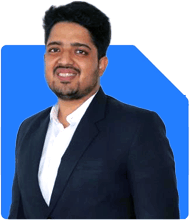Dear Sir, I'm 39 yrs old and having 1year old boy. My goal is to invent in Mutual funds for my kid education and also for my retirement with moderate risk. I'm planning to do SIP of 80k per month until my 50th year. 1)Would you please suggest me suitable Mutual funds with percentage allocation. 2) Also, suggest me whether I can achieve a corpus of 3crores with this SIP amount.
Ans: You’re 39 years old and want to invest Rs 80,000 per month for both your child’s education and your retirement. Your target is to achieve a corpus of Rs 3 crores by the time you’re 50. You also mentioned having a moderate risk tolerance. These are commendable goals, and it’s clear that you’re planning well ahead for your family’s future.
The timeline for both goals is around 11 years, which gives you enough time to benefit from compounding returns. This time horizon also allows you to take on moderate risk while aiming for growth-oriented investments. Below, I’ll provide a detailed strategy based on your objectives.
Evaluating Your Investment Strategy
You plan to invest Rs 80,000 monthly in SIPs for the next 11 years. This approach is excellent as SIPs offer the benefit of rupee-cost averaging. However, the success of your plan will depend on the type of funds you choose and how well you allocate your portfolio.
With moderate risk, you should aim for a balanced allocation between equity and debt funds to optimize returns while minimizing volatility.
Suggested Allocation Based on Moderate Risk
Given your moderate risk profile, a balanced portfolio is crucial. I recommend splitting your monthly SIP into three main categories: equity, debt, and hybrid funds. Here’s how you can allocate the Rs 80,000:
Equity Funds (50-60%): Around Rs 40,000 to Rs 48,000 per month should go into equity mutual funds. These funds are known to deliver higher returns over the long term but come with short-term volatility. Within equities, diversify across large-cap, mid-cap, and multi-cap funds. Large-cap funds offer more stability, while mid-caps and multi-caps provide growth potential.
Debt Funds (20-30%): Rs 16,000 to Rs 24,000 per month can be invested in debt funds. These provide stability and reduce overall portfolio volatility. Since your goal is long-term, you can choose long-duration debt funds or dynamic bond funds.
Hybrid Funds (10-20%): Rs 8,000 to Rs 16,000 per month can go into hybrid funds, which blend both equity and debt. These funds are suitable for moderate-risk investors, as they provide a balance between growth and stability.
Why Actively Managed Funds are Better than Index Funds
You didn’t mention any preference for index funds, but it’s important to note that for your goal of achieving a corpus of Rs 3 crores, actively managed funds can be a better option.
Active Management: Actively managed funds have the potential to outperform index funds, especially in emerging markets like India. Fund managers use their expertise to adjust the portfolio based on market conditions, aiming for higher returns.
Moderate Risk: Given your moderate risk appetite, actively managed funds are better suited as they offer the flexibility to rebalance between equity and debt, which is not possible with index funds.
Growth Potential: While index funds aim to replicate market performance, actively managed funds can exploit market inefficiencies to generate higher returns.
Direct vs. Regular Funds
You may also come across the option of investing directly in mutual funds, but I recommend sticking with regular funds and investing through a Certified Financial Planner (CFP). Here’s why:
Professional Guidance: A CFP can provide tailored advice based on your financial goals and risk tolerance. They also help you navigate market changes and adjust your portfolio accordingly.
Regular Monitoring: Direct funds require constant attention, whereas regular funds through a CFP offer active management. This reduces the stress of having to monitor your portfolio regularly.
Cost Efficiency: Although direct funds have lower expense ratios, the value added by a CFP in terms of expert advice often outweighs the cost difference.
Can You Achieve Rs 3 Crores by Age 50?
Let’s assess whether your SIP of Rs 80,000 per month can realistically grow to Rs 3 crores in 11 years. While I won’t use exact formulas, we can estimate potential outcomes based on historical market performance and a balanced portfolio.
Equity Funds: Historically, equity mutual funds in India have delivered returns ranging from 10-12% annually. Given your moderate risk profile, you can expect an average return of around 10% from the equity portion of your portfolio.
Debt Funds: Debt funds typically offer more conservative returns, around 6-8% per year. However, they stabilize your portfolio and reduce overall risk.
Hybrid Funds: Hybrid funds, with their blend of equity and debt, may offer returns in the range of 8-9%.
With an estimated average portfolio return of around 9%, your SIP of Rs 80,000 per month over 11 years could potentially help you reach or exceed your Rs 3 crore goal. However, keep in mind that market conditions and fund performance can fluctuate.
Adjusting for Inflation
While Rs 3 crores seems like a solid goal today, inflation could erode its purchasing power in the future. The cost of education and retirement expenses will likely increase over time. Therefore, it’s essential to periodically review your financial plan and adjust your SIP amounts or goals based on inflation and life changes.
Tracking and Monitoring Your Investments
To ensure that you remain on track to achieve your Rs 3 crore target, regular monitoring is essential. Here are some steps to help:
Annual Review: Conduct a yearly review of your portfolio to ensure it aligns with your goals. If the market performs exceptionally well, consider increasing your SIP amount to capitalize on growth.
Rebalancing: As you get closer to your goal, you may want to reduce exposure to high-risk assets like equities and increase allocation to safer debt instruments.
Certified Financial Planner (CFP) Support: Working with a CFP will help you make informed decisions and keep your investments aligned with your changing needs.
Additional Considerations for Your Child’s Education
Since one of your goals is your child’s education, I recommend setting aside a portion of your corpus specifically for that purpose. This way, you won’t have to dip into your retirement savings.
Targeted Education Fund: You can create a separate investment plan dedicated to your child’s education. Start by estimating the future cost of education and allocating a specific portion of your Rs 80,000 SIP towards this goal.
Diversified Approach: A balanced mix of equity, debt, and hybrid funds will still apply, but you may want to lean more towards stability as your child grows older.
Final Insights
Your approach to investing Rs 80,000 per month in SIPs for 11 years is well-structured and shows your commitment to securing a financial future for both your child’s education and your retirement. By choosing a balanced portfolio of equity, debt, and hybrid funds, you can achieve moderate risk and still aim for strong growth.
You’re on the right path to potentially achieving your Rs 3 crore goal, especially with a focus on actively managed funds. Regular monitoring and adjustments, along with the guidance of a Certified Financial Planner, will further increase your chances of success.
Best Regards,
K. Ramalingam, MBA, CFP
Chief Financial Planner
www.holisticinvestment.in
https://www.youtube.com/@HolisticInvestment


















.jpg)





